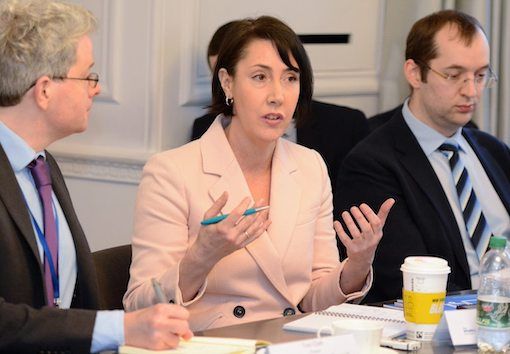
“What have I got, and where is it?” It is the first question that any sensible pension saver wants answered, and since—at least—the pensions green paper of 2002, it is the question which governments of all stripes have been notionally committed to helping them answer. But too many savers are still left clueless about how or where they can find out, which is why so much is resting on plans for an integrated and easy-to-view pensions dashboard.
With the government mulling its response to its consultation on the dashboard, Valentine’s Day was an opportune moment for Prospect and The People’s Pension to assemble a stellar crowd of political players and experts to talk through how a success can be made of the scheme. One that all political parties and industry leaders are committed to—at least in principle.
After Prospect’s Tom Clark, from the chair, had reflected on how noble words on “informed choice” in the past had often failed to translate into action, Patrick Heath-Lay from The People’s Pension argued that the encouraging “clear cross party consensus” around the dashboard now needed to “embrace the art of the possible.” This must be done while ensuring that current debate and future governance arrangements are designed around the paramount importance of consumer, not industry, interests.
Unveiling the new research he has undertaken for The People’s Pension, Dominic Lindley shed light on how dashboard-type schemes do—and don’t—work well around the world. Compulsory involvement by providers is essential for progress within a reasonable time frame, and so are clear legal rights for consumers.

Pensions Minister Guy Opperman responded, stressing that ears and minds would remain open on all these crucial details in Whitehall through the current consultation. He also stressed how serious he was about consensus, being in regular contact with Labour shadow Jack Dromey. He dismissed the thought that parliament’s Brexit paralysis would blow the project off course, emphasising the relatively modest volume of primary legislation required, as compared with all the crucial details which the department would be able to set out in regulations.
Treasury Select Committee Chair Nicky Morgan, and Labour frontbencher Ian Murray, both stressed how much of a mystery pensions still are to the great bulk of the population. Neither, however, disputed the minister’s suggestion that the dashboard could—potentially—“democratise” the whole business of pensions.
While the various industry voices around the table were all supportive of the scheme, some difference of emphasis did emerge. For the ABI, Rob Yuille insisted that innovation would best be served by allowing multiple dashboards to emerge in parallel, arguing that there were already various unofficial “find my pension” websites out there, which could not be ignored. But other speakers—including Jo Cumbo from the FT, Nigel Peaple from the PLSA, and Jenni Allen from Which?—were worried about different problems that could arise if a single dashboard were not got right first. All feared the potential for confusion, and some the possibility of exploitation if commercial players had too much scope to fashion the presentation or in any way edit the contents of the dashboard. While some of these voices were sympathetic to the idea of multiple dashboards emerging in time, all leaned towards the immediate priority being to establish and win trust for a single model.

Various voices—including Opperman himself, Peaple and Teresa Fitz of the Financial Services Consumer Panel—emphasised the importance of placing the development of the dashboard in the context of wider technological developments affecting the entire financial services landscape. The rate of uptake of banking apps is breathtaking, and no longer only among techies and youngsters but also the wider population. That implied both that take-up of something like the dashboard could happen quickly, but also that expectations for ease-of-use would be high.
Speaking for employers, Matthew Percival of the CBI stressed that “every pound we take and put into pensions is a pound of someone’s pay check,” and it had—until now—been hard to get employees to regard this as being of equal worth with the foregone pound from their salary. That has to change, and the dashboard could be a big part of getting workers to grasp the value of saving for retirement—“without trust in this process, it is doomed to fail.”
And that was the mood of the room. Cumbo summed it up by arguing “the country is crying out for this service,” but that it would count for nothing if not trusted. How to achieve that trust? Clarity of presentation, and clarity in the standards set for information required, were the practical over-riding priorities. Having engaged and listened carefully, Opperman and his official went back to the department of work and pensions with these clear messages in mind.











